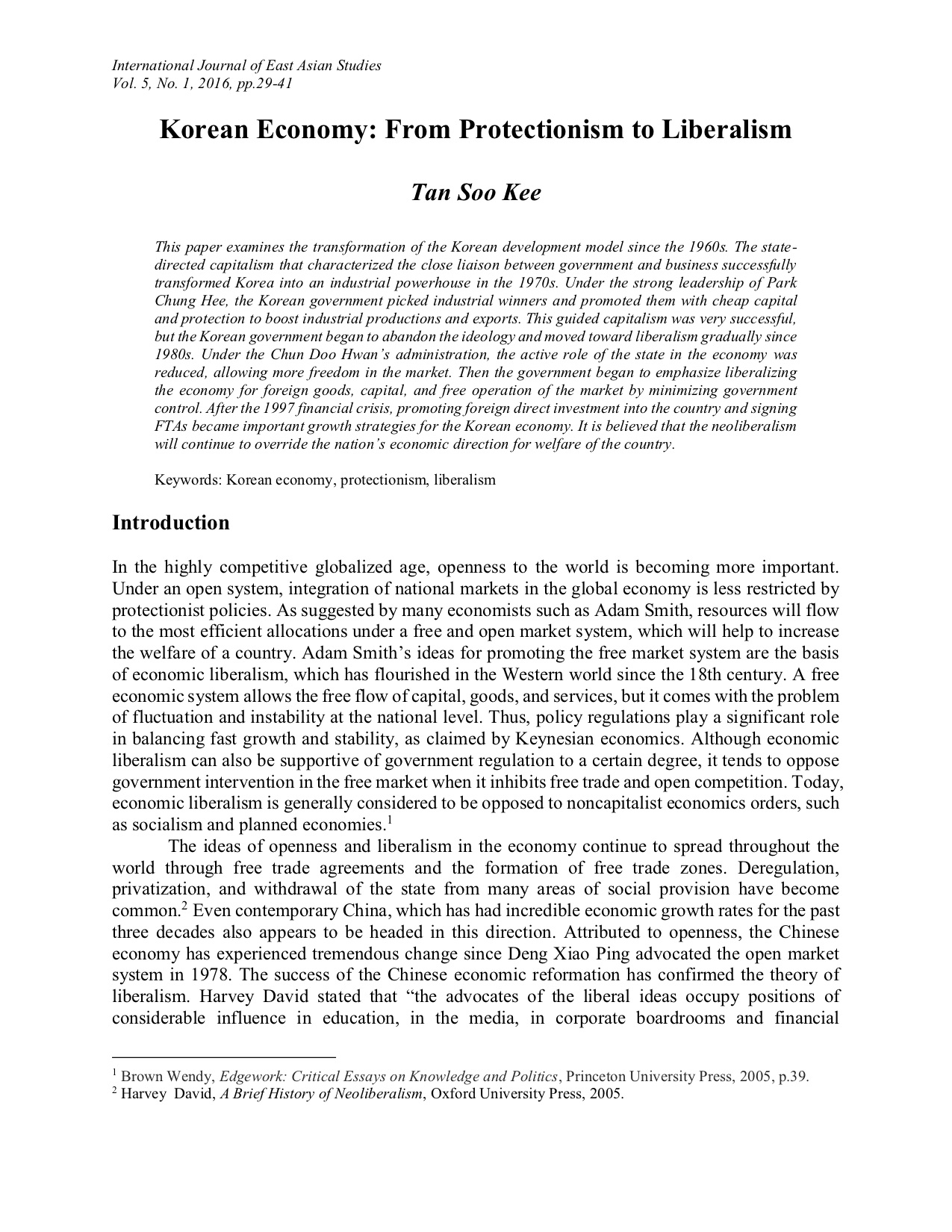Korean Economy: From Protectionism to Liberalism
Main Article Content
Abstract
This paper examines the transformation of the Korean development model since the 1960s. The state- directed capitalism that characterized the close liaison between government and business successfully transformed Korea into an industrial powerhouse in the 1970s. Under the strong leadership of Park Chung Hee, the Korean government picked industrial winners and promoted them with cheap capital and protection to boost industrial productions and exports. This guided capitalism was very successful, but the Korean government began to abandon the ideology and moved toward liberalism gradually since the 1980s. Under the Chun Doo Hwan’s administration, the active role of the state in the economy was reduced, allowing more freedom in the market. Then the government began to emphasize liberalizing the economy for foreign goods, capital, and free operation of the market by minimizing government control. After the 1997 financial crisis, promoting foreign direct investment into the country and signing FTAs became important growth strategies for the Korean economy. It is believed that the neoliberalism will continue to override the nation’s economic direction for the welfare of the country.
Downloads
Article Details
Copyright
Submission of a manuscript to the WILAYAH implies that the submitted work has not been published before (except as part of a thesis or report or abstract), that it is not under consideration for publication elsewhere; that all co-authors have approved its publication. The WILAYAH : International Journal of East Asian Studies adopts CC BY license. As such, we would be grateful if an acknowledgement accompanies the republication that the work was originally published in WILAYAH. The editors will ensure digital preservation of access to the journal content by the Journal depository section.
Disclaimer
Although the Department of East Asian Studies is the publisher of the WILAYAH : International Journal of East Asian Studies, the views presented in the WILAYAH are entirely those of the contributors and do not reflect the official stand of the Department of East Asian Studies. The Department does not hold itself responsible for the accuracy of any article published. Publisher and co-publishers assume no responsibility, nor by the editors for any injury and/or damage to persons or property as a result of any actual or alleged libellous statements, infringement of intellectual property or privacy rights, or products liability, whether resulting from negligence or otherwise, or from any use or operation of any ideas, instructions, procedures, products or methods contained in the material therein.

